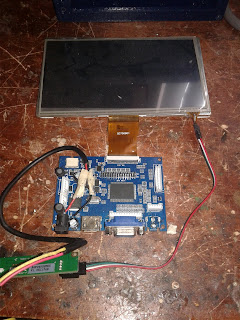48. External screen
The main purpose of extending the desktop on the computer is to perform more tasks while on the same screen. With this project, you don't need to switch windows around-now you can work on many windows simultaneously. In most operating systems, there is a thing called desktop spaces, which allowed different desktop sessions in each space. If you want to do many things at once without hogging up the visible desktop space, you will need an external screen.
This project will utilize the TFT screen with a driver, a boost converter, the tp4056 charger module, 3 Li-ion batteries, and a case. This is the time when 3-d printing will be utilized in this project. The cases were printed through the Anet A8, which the material used for it is PLA. There are 3 separate parts to print for, but they form into one (Shown in the picture). It goes from the display holder, the middle layer piece, and the entire back base, all of which hold the main components in place.
The screen has to be a 7" inch, 1024*600 resolution so that it should fit snuggly on the display frame. Once it fits, the display driver fits on the back of the middle piece, so that it becomes secure. The remote board connects to the main driver board via the ribbon cable, so that it will be easier to configure the display later on. The power leads were then connected to the driver board so that it will receive power from the Li-ion batteries. Once the inside wiring was connected, close the lid up together, and then wire up the battery configuration, which the tp4056 connections were made to the battery, the boost converter connects to the tp4056 on the input end, and the display board on the output end. To make the external screen stand up, a tripod was used in the process, which made it adjustable for the person's view.
Now, once everything was powered correctly, turn on the external display, and connect the external display to the computer via input ports, such as VGA, HDMI, or AV1. Now you will be able to extend the desktop space, or use it to test out micro-computers such as a raspberry pi!
<Test>






Comments